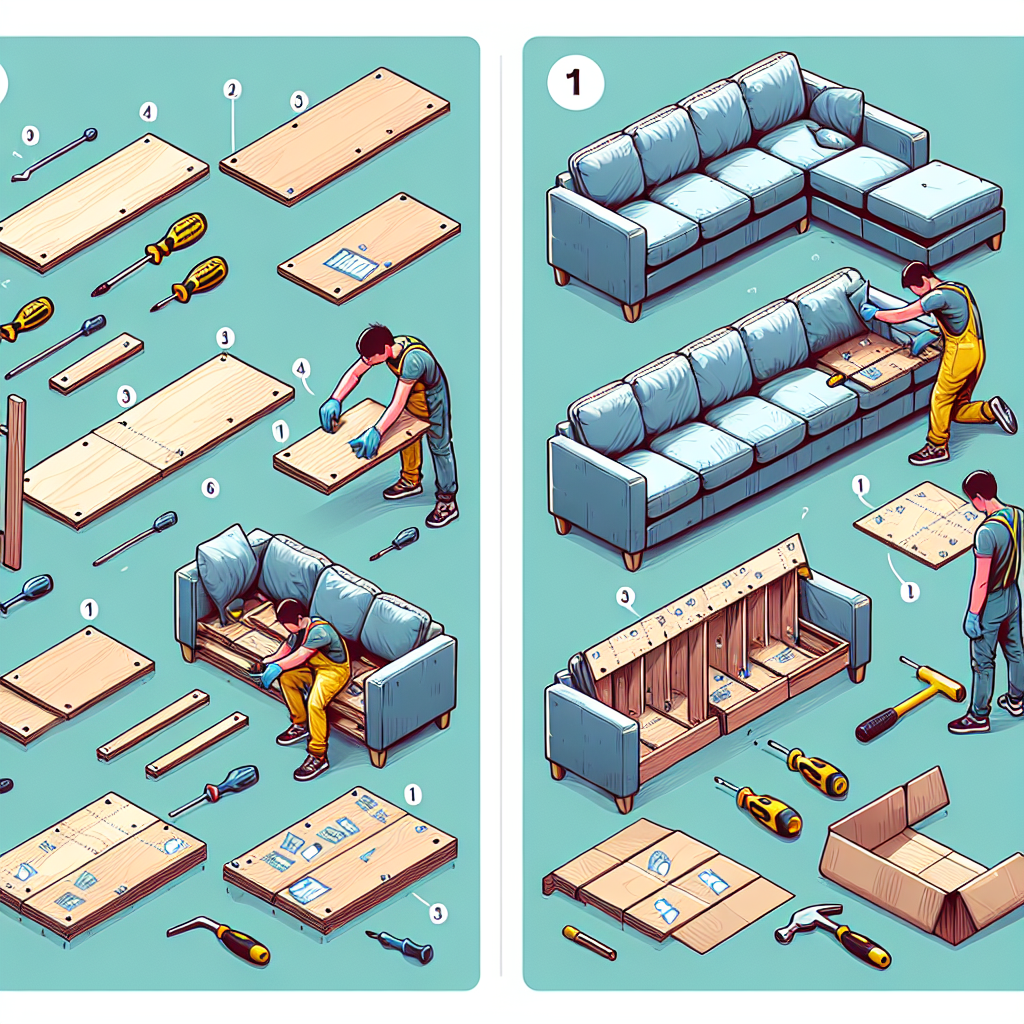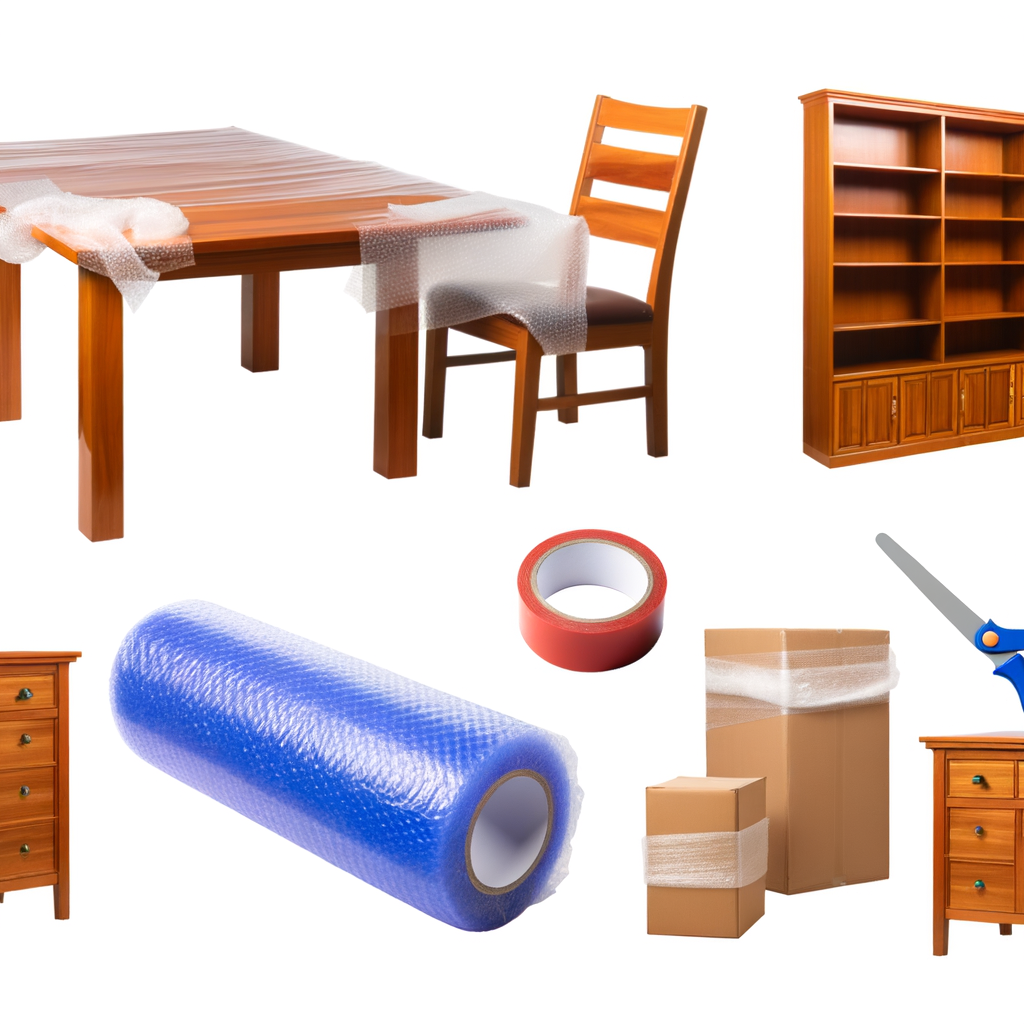
Moving to a new home in 2025?
Don’t let your bulky sectional sofa turn an exciting transition into an exhausting nightmare. One of the most overlooked but critical steps in a smooth move is learning how to safely disassemble and reassemble your sectional sofa.
Whether you’re squeezing down a narrow staircase or trying to prevent scratches on your new hardwood floors, taking your sofa apart the right way can save time, effort, and frustration — not to mention protect your investment.
Disassembling a sectional sofa before a move is a game-changer. Not only does it make the furniture lighter and easier to handle, but it also greatly reduces the risk of damaging doors, walls, or the sofa itself. Modular furniture is designed for flexibility, and breaking it down into smaller, manageable pieces ensures safer transport and simpler reassembly once you’re settled.
In this guide, you’ll learn what tools you’ll need, how to disassemble and reassemble your sectional sofa step by step, and crucial tips on protecting both your furniture and your back during the move.
Tools and Supplies You’ll Need
Before taking apart your sofa, gather the right tools and supplies to keep things organized and safe. Start with common hand tools such as Phillips and flathead screwdrivers, and an Allen wrench—these are essential for unscrewing legs, arms, and fasteners. For tougher bolts, a cordless drill can save time and effort.
Don’t forget to protect yourself and your surroundings. Sturdy work gloves can shield your hands from sharp hardware, and safety goggles are a worthwhile precaution during any DIY task. To protect the sofa pieces during transport, stock up on moving blankets, plastic wrap, zip-top bags for small hardware, and labels to ensure you know what’s what after everything’s packed away.
Furniture sliders and a dolly are optional but can be total lifesavers, especially if you’re working alone or across multiple floors.
Understand Your Sectional Sofa’s Configuration
Not all sectionals are created equal. They come in various styles—L-shaped, U-shaped, modular, or even sleeper sofas with hidden beds. Each type has a unique layout and disassembly sequence, so familiarize yourself with your sofa before you begin.
Look for the connection points that hold the sections together. These could be metal brackets, clips, or hook mechanisms usually found underneath the joining parts. Knowing exactly where these fasteners are helps prevent blind pulling or breakage.
Whenever possible, consult the manufacturer’s manual or website for specific instructions. As Apartment Therapy advises, “If your sectional is from a popular brand, chances are high that you can find the manual or a disassembly video online.” Having accurate information will make the process smoother and less stressful.
Preparing the Sofa for Disassembly
Begin by clearing the area around the sofa. Moving furniture in a cluttered space invites accidents and damage. Lay down mats or old sheets to protect your floors, especially if you’re working on hardwood or tile.
Next, remove all the loose parts—cushions, throw pillows, blankets—to expose the sofa’s frame and hinges. This not only lightens the load but also makes disassembly more straightforward.
Give the sofa a quick vacuum or dusting before taking it apart. Clean furniture is easier to handle and won’t transfer grime or allergens to your new home. Take photos at every step of the takedown process to use as visual cues during reassembly.
Step-by-Step Disassembly Process
Start by separating each sofa section. Identify the connectors first—these may be brackets embedded in the frame or hooks that slot into one another. Use a flashlight if needed to avoid missteps.
Carefully detach the sections one by one, ideally with someone helping to support the weight. Always lift from underneath rather than dragging to prevent structural damage, especially on older sofas.
If your sofa has removable arms, legs, or built-in parts like cup holders, reclining features, or sleeper mechanisms, detach these next using the appropriate tools. Some parts may be tightly screwed in, so apply even pressure and avoid over-forcing.
Keep hardware in small zip-top bags, clearly labeled by the part or section they belong to. Tape each bag to its corresponding cushion or frame to stay organized and eliminate confusion later.
Wrapping and Protecting Sofa Pieces for Moving
Once disassembled, it’s time to wrap and protect your sofa parts. Use moving blankets to guard against nicks and punctures, and secure everything with plastic wrap to hold cushions and fabric in place.
Delicate fabric types like leather or suede need extra care. Add a layer of soft padding or fabric sheets under the moving blanket to prevent scratches or stretching. Label every component clearly using masking tape or printable labels, so reassembly is straightforward at your new home.
Tips for Easier Transportation
Before lifting a single piece, measure doorways, staircases, and hallways to confirm that everything can fit through comfortably. This minor step can prevent major frustrations down the road.
Make your life easier with the right techniques and tools. Use proper lifting form—back straight, lift with your legs—and enlist the help of a friend or family member. Consider a dolly for heavier sections, especially if stairs are involved.
If this feels overwhelming, hiring professional movers might be worth the cost. Many offer furniture disassembly and reassembly as part of their services.
Reassembling the Sectional Sofa at Your New Location
When you arrive at your destination, unwrap and inspect each piece thoroughly for any damage sustained during transit. Check that all hardware bags are intact and ready for use.
Use the photos and labels from disassembly as your road map. Reconnect the main sofa sections in reverse order, starting with the largest components. Attach arms, legs, and any features like recliners or beds using the original hardware.
Once everything is secure, test for stability and ensure all parts are correctly aligned. Replace the cushions, fluff the pillows, and give the sofa a final wipe-down to remove dust or packaging fibers.
Troubleshooting Common Issues
If a screw or bolt goes missing, don’t panic. Most hardware stores carry standard-sized replacements, and many furniture makers sell parts online. Always bring a sample if possible to match sizing precisely.
Loose or wobbly connections often result from skipped steps or worn out connectors. Double-check alignment and tighten everything snugly. If the frame or fabric was damaged during moving, consider contacting the manufacturer or a local upholstery repair technician for guidance.
 Final Tips and Safety Considerations
Final Tips and Safety Considerations
Know your limits. If disassembling or lifting your sectional feels physically dangerous, don’t hesitate to call in professionals.
Avoid injury by lifting carefully and wearing protective gear. Keep children and pets clear of the work area, and take breaks to avoid fatigue-related accidents.
If you plan to store the furniture for a while, keep the disassembled parts in a dry, climate-controlled space. Label everything clearly and stack in a way that avoids crushing cushions or warping frames.
Conclusion
Disassembling and reassembling a sectional sofa may seem daunting, but with the right preparation and a few smart tips, it becomes a manageable DIY task. Staying organized, patient, and cautious ensures a smoother move and helps your furniture last for years to come.
So go ahead—get those tools ready and tackle your move like a pro. Have any tips or stories from your own moving experience? Share them in the comments below!









